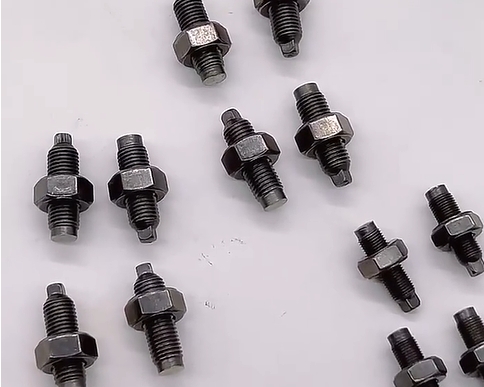The Machining Process of Crank Arm Rod Screws
Time:2024-06-11 23:20:22 Source:未知 Click:次
Crank arm rod screws are common components in mechanical equipment, and their machining process significantly affects product quality and performance. This article will provide a detailed introduction to the machining process of crank arm rod screws to help better understand the importance of this aspect.
1. Material Selection for Crank Arm Rod Screws:
The first step in the machining process is material selection. Depending on the operating environment and requirements, materials such as carbon steel, stainless steel, or aluminum can be chosen. Carbon steel offers high strength and hardness and is suitable for applications requiring greater loads; stainless steel has good corrosion resistance and is suitable for恶劣 environments; aluminum is lightweight and is suitable for applications where weight is a concern.
2. Machining Process of Crank Arm Rod Screws:
a. Blank制造: According to design specifications, blanks are manufactured through methods such as casting, forging, or cold extrusion to meet required dimensions.
b. Heat Treatment: The blanks undergo heat treatment to improve their mechanical properties. Common heat treatment methods include annealing, normalizing, and hardening.
c. Machining: The blanks are machined to the required dimensions and shapes using methods such as turning, milling, and grinding.
d. Threading: Specialized threading equipment, such as threading lathes or mills, are used to create threads on the screws.
e. Surface Treatment: To enhance corrosion resistance and aesthetics, the surface of the screws can be treated with processes such as galvanizing, painting, or anodizing.
f. Assembly: The machined screws are assembled with other components to form a complete mechanical equipment.
3. Key Points in the Machining of Crank Arm Rod Screws:
a. Precision Control: The machining process must strictly control dimensional, shape, and positional tolerances to ensure the quality and performance of screw assembly.
b. Surface Quality: The surface of the screws should be smooth, free of scratches, and free of defects such as blisters to improve corrosion resistance and aesthetics.
c. Strength and Hardness: Materials and heat treatment processes should be selected according to the application requirements to ensure the screws have sufficient strength and hardness.
d. Anti-loosening Measures: To prevent loosening of the screws during use, anti-loosening washers, locking agents, or other measures can be employed.
4. Summary:
The machining process of crank arm rod screws has a significant impact on their quality and performance. By understanding material selection, machining processes, and key points, the quality of crank arm rod screw manufacturing can be ensured, thus improving the performance and service life of the entire mechanical equipment. This provides a useful reference for many mechanical manufacturing enterprises and engineers.
In our country, the machining process of crank arm rod screws has been widely researched and applied, and many enterprises have achieved a high level of manufacturing. However, there are still some issues that need further research and resolution, such as the development of new materials, optimization of machining processes, and intelligent manufacturing. It is believed that in the near future, the machining process of crank arm rod screws in our country will become more mature and make greater contributions to the global mechanical manufacturing industry.


